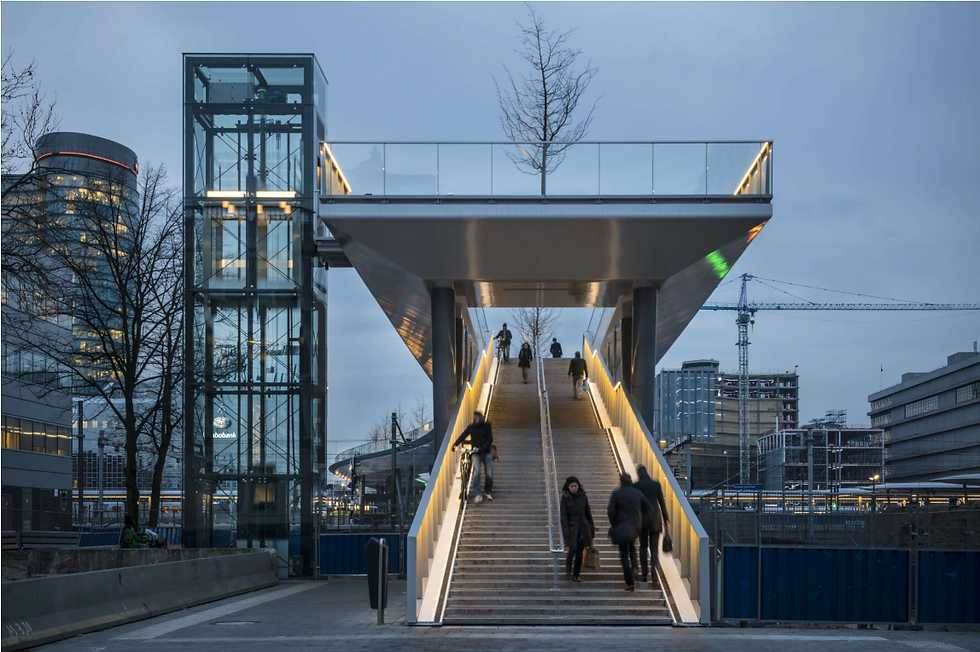Razende Reporters – A Long Winter
- TOPOS

- Apr 11, 2018
- 4 min read

Column by David de Boer.
Since this year, Landscape Architecture and Spatial Planning students report from a broad scope of places where they are based during their international exchange and studies. This results in a series of local reports concerning spatial issues from around the globe. This time, David de Boer reports the situation during winter in Stockholm, Sweden’s capital. The city’s climate and latitude have resulted into a certain urban culture that deals with the challenges posed by a long and dark winter. But not everyone can harness themselves against the cold in Stockholm.
The high latitude of Stockholm compared to the Netherlands takes some getting used to, since it, besides the cold climate, determines the amount of daylight throughout the year. The winters get dark soon and around Christmas the sun sets around 14.30 in the afternoon. This of course has large effects on the wellbeing of its residents and the public life in the city. Many people endure the effects of seasonal depression and many Swedes are popping vitamin D pills like candy. I myself have noticed that the early dusk had a large impact on my sleeping pattern and daily/nightly routine. The evening just seems timeless whereas partygoers and grocery shoppers pass each other on the street during the evening.
About the cold: although Stockholm has a relatively moderate climate compared to the rest of the nordic countries, a chilling wind from the baltic sea contributes to the cold atmosphere in the city. Snowfall may cause you to slip and slide through the streets, but it does help keep the city somewhat illuminated because of reflecting light. The effects of the frigid atmosphere have been tried to mitigate by urban design and architecture. Take Gamla Stan (Old Town) for example. Besides its dense organic development, the area situated on an island in the archipelago has narrow streets on its outer edges blocking the cold wind. The buildings are painted in warm, mediterranean colours to create a warmer image and windowsills, ornaments and setbacks are kept to a minimum for the interiors to catch as much sunlight as possible.

View on Själagårdsgatan in Gamla Stan. Source: Judy Leegwater
North of the island of Gamla Stan lies Norrmalm, a part of town that was partly demolished and rebuilt in the 1960’s. The crammed and dense street grid was replaced by a design inspired by the modernist lifestyle and ideal of a business centre. Large department stores and shopping malls were built and were connected by an intricate network of underground pedestrian tunnels throughout the years. Nowadays you can come to Stockholm by train, do your shopping in multiple department stores and malls and leave through another metro station without ever having to be outside. It is for a reason that the central public space of the area, Sergels Torg, is a sunken square which is the node of all tunnels. This is convenient when it is cold outside.

Sergels torg in Norrmalm, connecting to the underground passages to malls and department stores around. Source: Jan Willem van Veelen
Not just in the centre, but also in the suburbs the mall culture of Sweden has gained ground. New malls are popping up and are designed in a hip and luxurious image to offer a pleasant shopping experience away from the city centre, and the extensive and excellent metro network of Stockholm makes it easy to get there. Although shopping streets are becoming popular again such as in the hip district of Södermalm, many Swedes opt for convenience and comfort during the winter times. It appears that one of the main activities of urban centres, shopping and eating, shifts to the indoors in Stockholm during winter, with malls and stores becoming its public space.

Interior of the Mall of Scandinavia in Solna. Source: Wikimedia Commons
However, the problem is that malls and stores are not purely public space. The space is owned and controlled and is based on commercial intentions. Malls are almost the only spaces to escape from the cold climate. To gain some warmth during winter in the city, you are expected to buy something when coming into these malls and department stores. Moreso, these spaces have the authority to deny access to unwanted individuals. Not being welcome indoors means spending your time outdoors, with the temperatures not rarely dropping lower than negative double digits. The aspects of equality and comfort within public space are put under pressure here. Vulnerable groups get the worst of the winter it seems, such as the homeless.
Homeless people are a common sight in Stockholm, as many seek their income in the busy city centre. Although there are options for indoor shelters for these vulnerable groups, many can be seen outside, setting up camp with thick blankets and sleeping bags in underpasses and construction sites and tunnels, but also underneath awnings of storefronts. It makes one wonder about the relations between democratic public space and urban climate.

A homeless person in central Stockholm. Source: Wikimedia Commons
Fortunately, spring seems to slowly make its entrance in Stockholm. People enjoy being outside in the city again and the street life seems to appear outside again. It is a pleasant alternative to the malls, especially when the sun finally breaks through. But Stockholm’s outdoor public space is also under threat of commercialisation, for example with the plans to locate an Apple store in the middle of a centrally located park in Stockholm. Sweden being a country praised for being social and democratic seems to show some cracks in the public life during a typical cold winter. Looking ahead at the long expected summer, the problems seem to disappear for now. At least until the next winter.
april 12, 2018







Comments